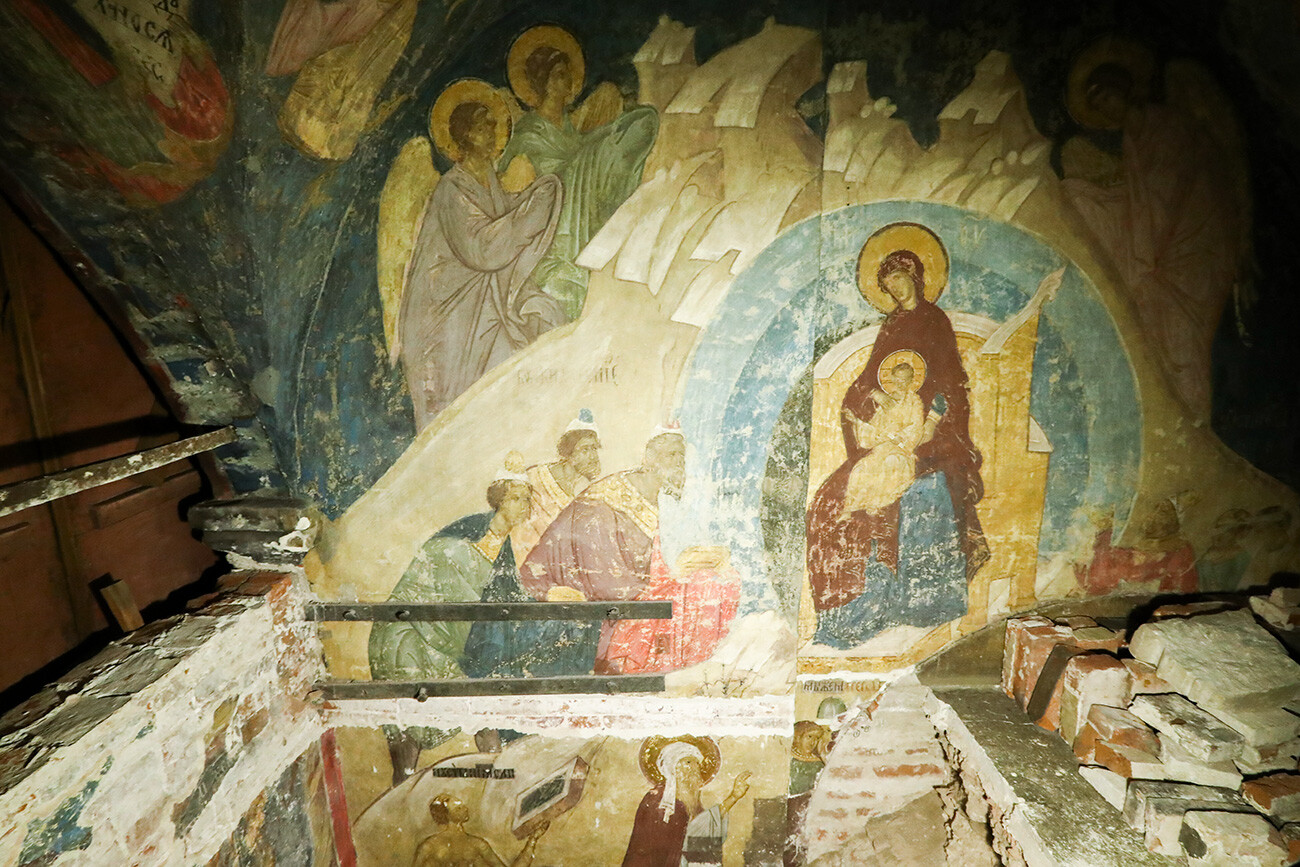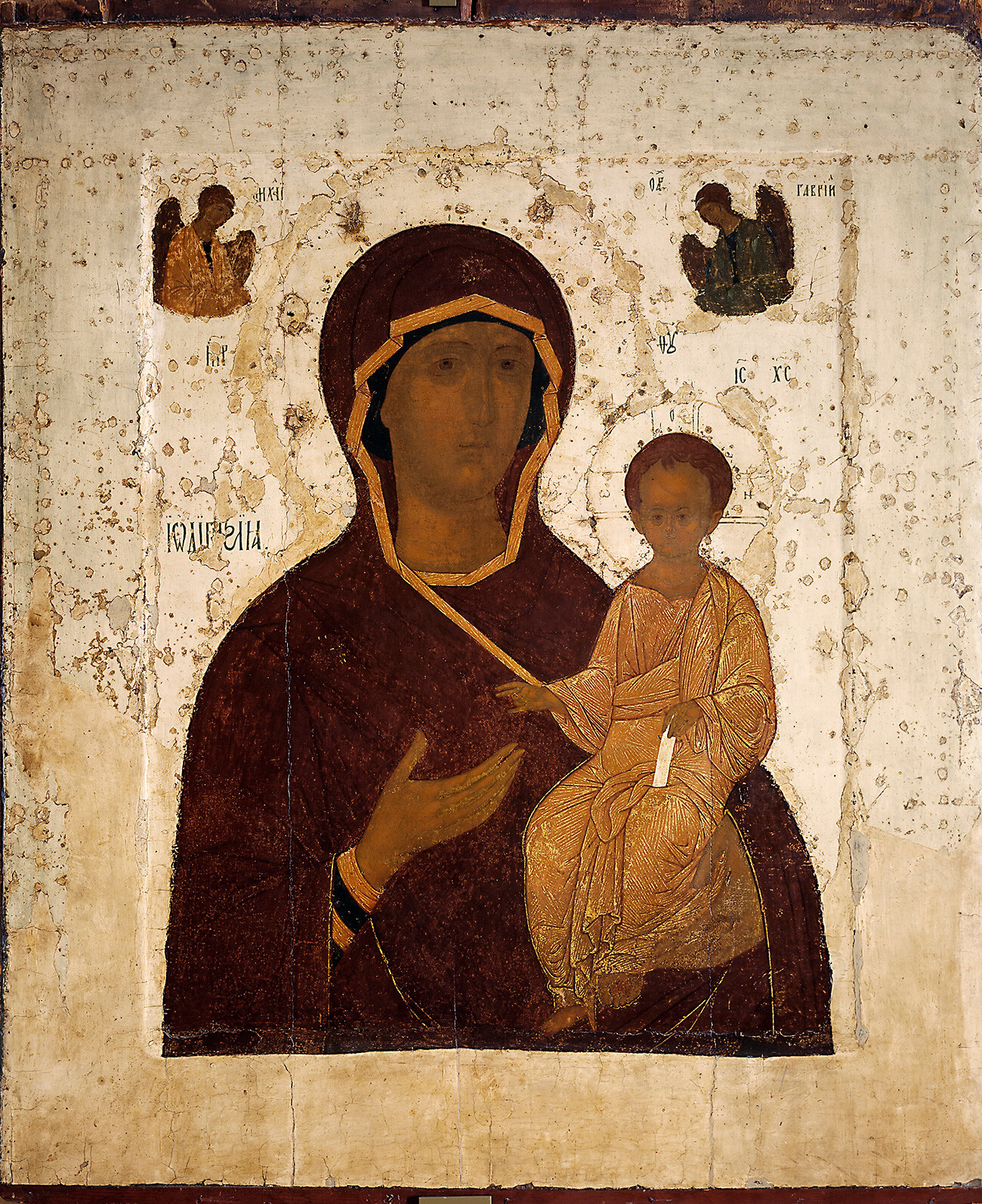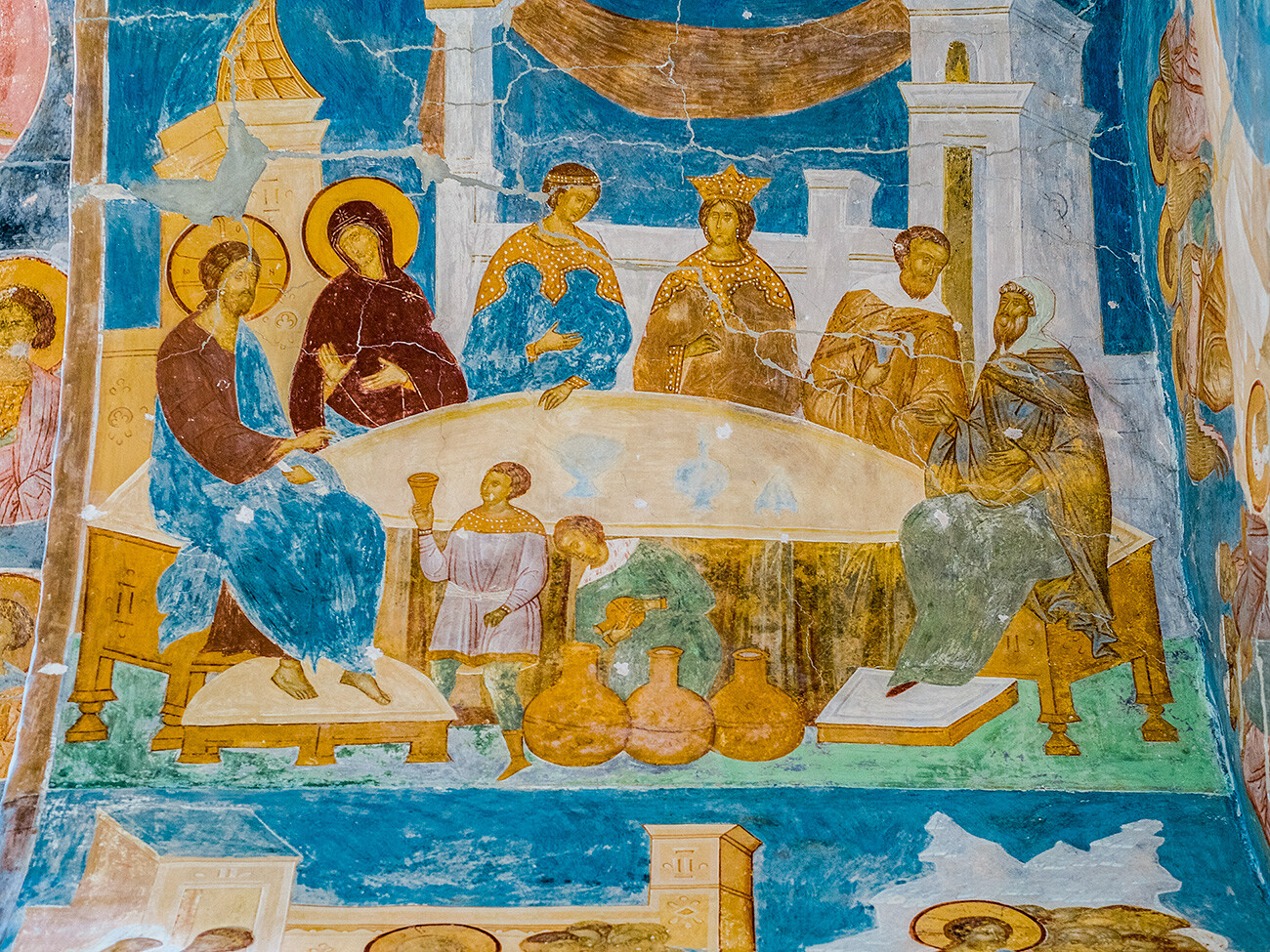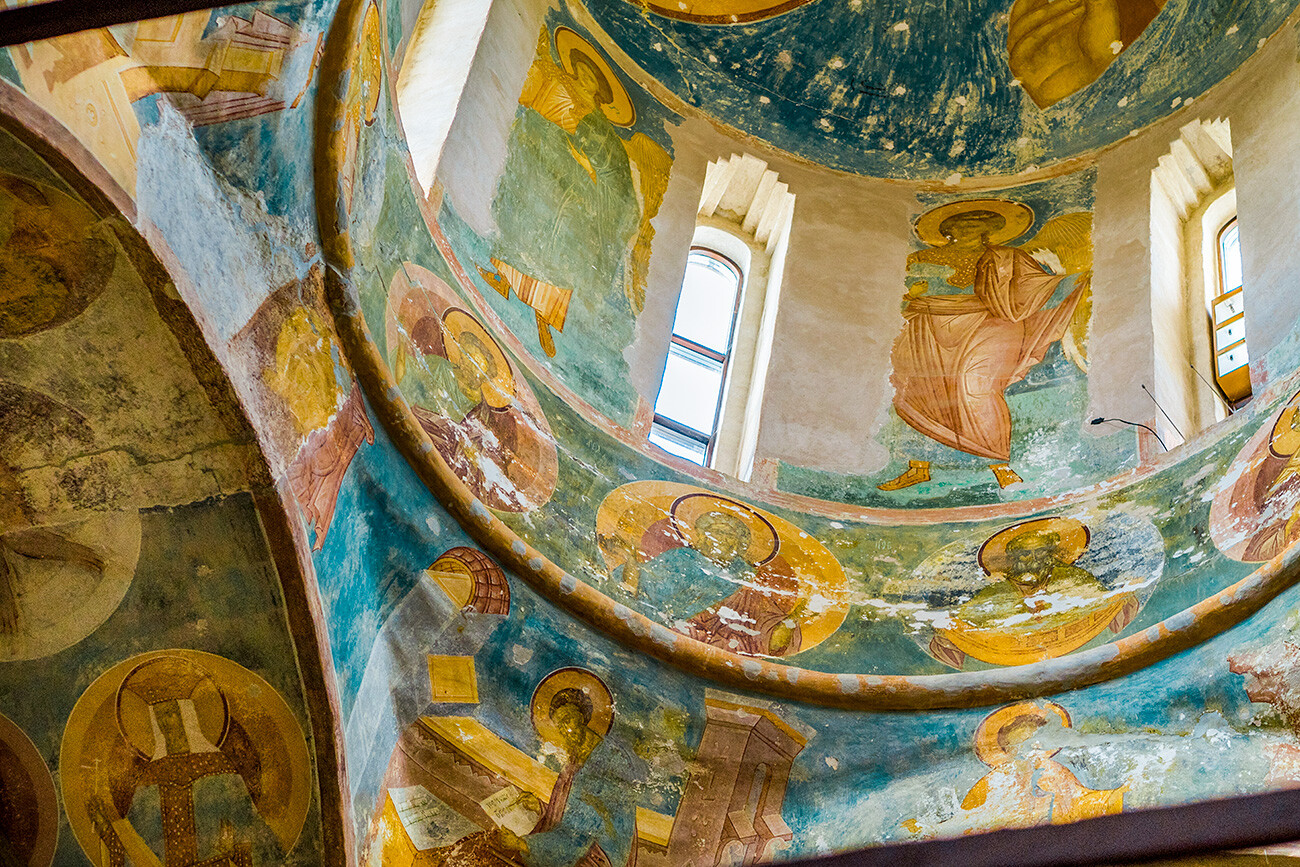Dionisy’s frescoes: How Old Russia’s most famous iconographer painted a remote northern monastery

Artist Dionisy is considered to be the successor of the iconographic tradition of the legendary Andrei Rublev, author of the famous ‘Trinity’ icon.
It is known that Dionisy painted the cathedral in the Pafnutevo-Borovsky Monastery in Kaluga Region. And Grand Duke Ivan III liked his frescoes so much that ordered a number of icons for the newly built Assumption Cathedral of the Moscow Kremlin.
Unfortunately, neither the paintings of the monastery nor the iconostasis of the Kremlin cathedral have survived.
 During the 2020 restoration in the Moscow Kremlin's Assumption Cathedral, a part of Dionisy's paintings were discovered
During the 2020 restoration in the Moscow Kremlin's Assumption Cathedral, a part of Dionisy's paintings were discovered
However, the Tretyakov Gallery stores the ‘Hodegetria’ icon of the Mother of God, which Dionisy painted in 1482 for the Ascension Cathedral in the Moscow Kremlin.
 ‘Hodigitria’ is considered the earliest surviving work by Dionisy
‘Hodigitria’ is considered the earliest surviving work by Dionisy
Dionysius was one of the most revered artists in Russia of the late 15th and early 16th centuries. By the way, he was a contemporary of Leonardo da Vinci.
The main museums of the country keep several other icons by the artist.
 ‘Christ Pantocrator’ is one of Dionisy' icons for the Pavlo-Obnorsky Monastery near Vologda
‘Christ Pantocrator’ is one of Dionisy' icons for the Pavlo-Obnorsky Monastery near Vologda
But, the most extensive legacy of Dionisy can be found in a remote northern monastery near Vologda.
Why was the famous artist painting a remote northern monastery?
There were times when the Ferapontov Monastery was the spiritual and enlightenment center of the Russian North. This cloister and the neighboring Kirillo-Belozersky monastery used to stand on trade routes to Arkhangelsk.
 Aerial view to Ferapontov monastery
Aerial view to Ferapontov monastery
The most noble and wealthy people of Old Russia would often visit these lands. And great princes and tsars, including Ivan the Terrible, went there to pray.
 Ferapontov monastery gates
Ferapontov monastery gates
In 1490, the Nativity Cathedral of the Ferapontov Monastery was built. And, in 1502, Dionisy, together with his sons Vladimir and Theodosius, painted the interior. And it took them just 34 days!
 The Nativity Cathedral of the Ferapontov Monastery
The Nativity Cathedral of the Ferapontov Monastery
What’s so unique about Dionisy’s frescoes?
Miraculously, 600 square meters of frescoes have survived to our days. In 2000, the ensemble of the Ferapontov Monastery with Dionisy's frescoes was included on the UNESCO World Heritage List.
It is difficult to find another such example of excellent preservation of 16th century murals in Russia.
On the inside of the cathedral dome, Dionisy depicted the Christ Pantocrator.
 Christ Pantocrator is depicted on the inside of the cathedral dome
Christ Pantocrator is depicted on the inside of the cathedral dome
The central altar part is dedicated to the glorification of the Mother of God. On the walls, you can find scenes of the Last Judgment, scenes from the life of the Virgin Mary, as well as images of Evangelists and Russian saints.
 Protection of the Theotokos
Protection of the Theotokos
 Mother of God is depicted on the altar vault of the central nave
Mother of God is depicted on the altar vault of the central nave
 Wedding at Cana
Wedding at Cana
 Saint Nicholas is depicted in the center of this altar vault
Saint Nicholas is depicted in the center of this altar vault
 Saints and patriarchs
Saints and patriarchs
 Vision of Eulogius
Vision of Eulogius
 The view to the Nativity Cathedral frescoes
The view to the Nativity Cathedral frescoes
 Evangelists and Archangels are featured on the drum
Evangelists and Archangels are featured on the drum


